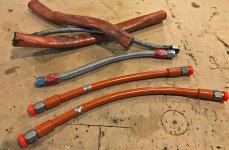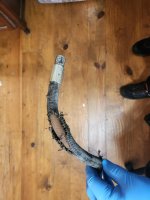I cannot read the tag on my engine hoses because of their installed position so I'm asking the question here.
What is the service life for the oil cooler hoses (Vans VA-134, VA-1356) described as stainless flex hose and the Fuel supply hoses with firesleeve (Vans VA-129 & VA-138)? All these hoses are noted as AE701 hoses and it appears made from PTFE material.
What I read between the lines is that being teflon they are considered non-aging. Sure, you still have to use common sense as to condition and continued service but the hoses due not time out by themselves.
What is the service life for the oil cooler hoses (Vans VA-134, VA-1356) described as stainless flex hose and the Fuel supply hoses with firesleeve (Vans VA-129 & VA-138)? All these hoses are noted as AE701 hoses and it appears made from PTFE material.
What I read between the lines is that being teflon they are considered non-aging. Sure, you still have to use common sense as to condition and continued service but the hoses due not time out by themselves.






